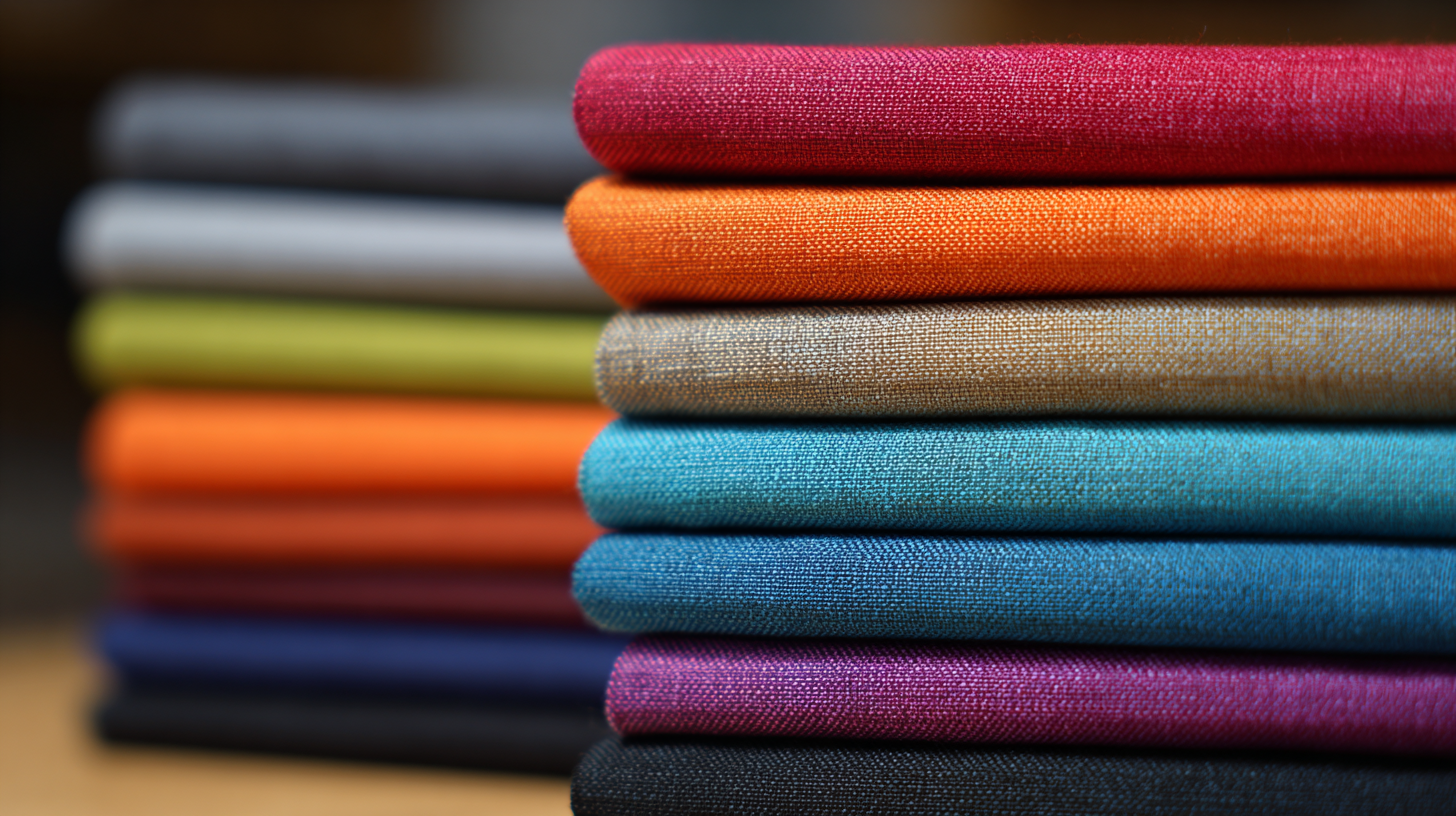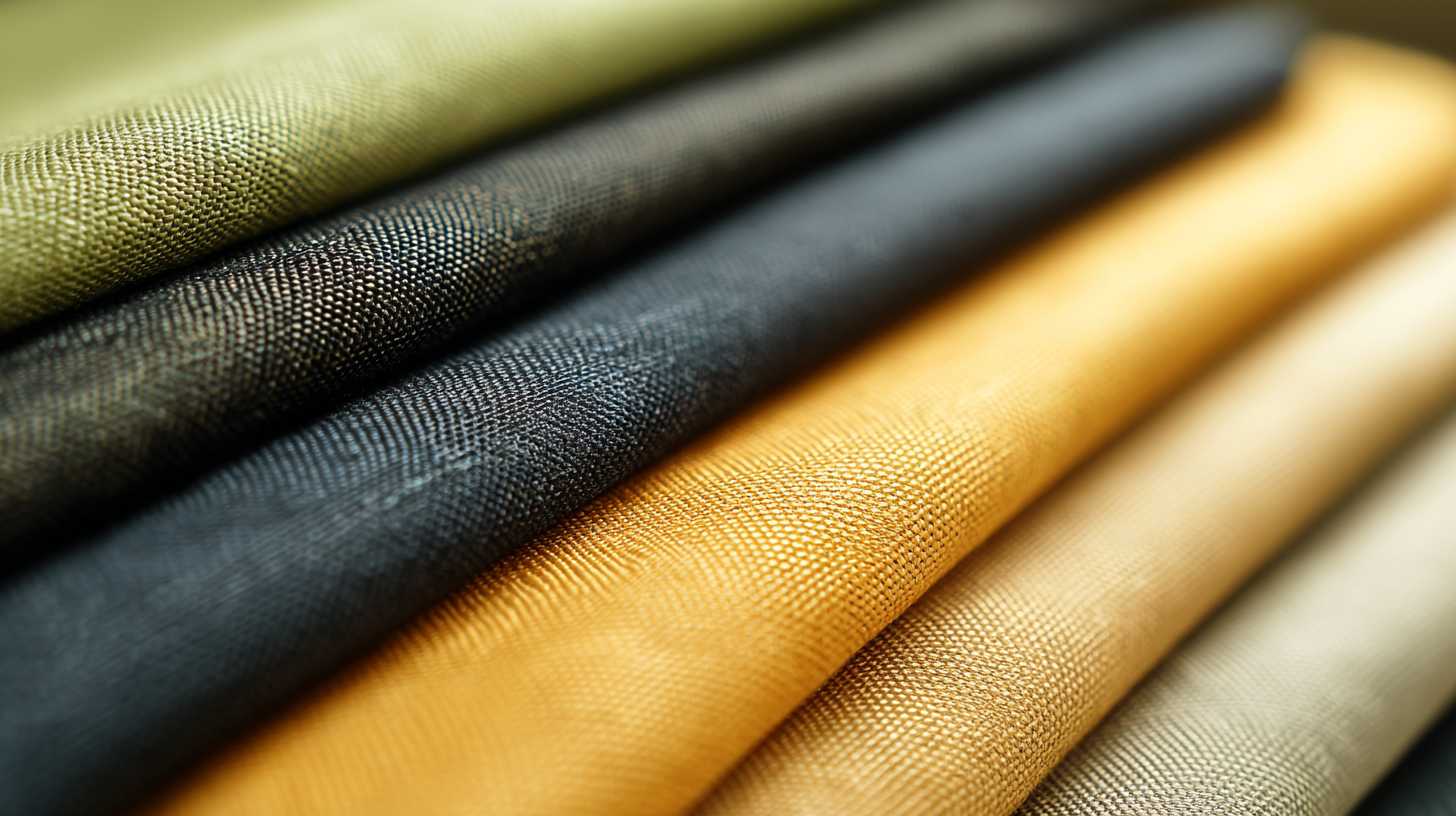- +86 13957580925
- 510515850@qq.com
- adela0928@163.com
 The demand for innovative textiles in the fashion and interior industry has surged, with the Polyester Viscose Blend emerging as a popular choice among designers and manufacturers alike.
According to a recent report by Allied Market Research, the global textile market is projected to reach $1.23 trillion by 2024, with synthetic fibers like polyester playing a pivotal role in this growth.
The Polyester Viscose Blend combines the durability and wrinkle resistance of polyester with the softness and breathability of viscose, offering a versatile solution for various fabric needs.
This blend not only enhances comfort but also promotes sustainability, as it can be produced using recycled materials.
As consumers increasingly prioritize eco-friendly options, understanding the benefits of the Polyester Viscose Blend becomes essential for making informed decisions in textile selection.
The demand for innovative textiles in the fashion and interior industry has surged, with the Polyester Viscose Blend emerging as a popular choice among designers and manufacturers alike.
According to a recent report by Allied Market Research, the global textile market is projected to reach $1.23 trillion by 2024, with synthetic fibers like polyester playing a pivotal role in this growth.
The Polyester Viscose Blend combines the durability and wrinkle resistance of polyester with the softness and breathability of viscose, offering a versatile solution for various fabric needs.
This blend not only enhances comfort but also promotes sustainability, as it can be produced using recycled materials.
As consumers increasingly prioritize eco-friendly options, understanding the benefits of the Polyester Viscose Blend becomes essential for making informed decisions in textile selection.
Polyester viscose blend fabrics are becoming increasingly popular in the textile industry due to their unique properties that combine the best of both materials. Polyester, known for its durability and resilience, adds strength and resistance to wrinkles and fading. In contrast, viscose, derived from natural cellulose fibers, provides a soft, luxurious feel and excellent breathability. According to a report by the Textile Association, fabrics made from polyester viscose blends have shown a significant increase in durability, with studies indicating a 30% improvement in tear strength compared to pure viscose fabrics.
In addition to strength, the blend enhances moisture-wicking properties, making it ideal for activewear and everyday clothing. The blend allows for efficient moisture absorption, with viscose providing a cooling effect while polyester quickly disperses moisture, keeping the wearer comfortable during various activities. Research from the Fiber Science Institute highlights that garments made from polyester viscose blends retain their shape and color better than those made solely from natural fibers, leading to prolonged product life and reduced environmental impact. These unique properties make polyester viscose blends an excellent choice for manufacturers and consumers alike, catering to the growing demand for versatile, high-performance fabrics in today's market.

When it comes to everyday wear, the polyester-viscose blend stands out as a highly advantageous fabric choice, combining the best of both worlds. Polyester provides excellent durability and resistance to wrinkles, while viscose adds a touch of softness and breathability. This synergy enhances comfort, making these blended fabrics ideal for garments that are worn daily, from casual wear to work attire. Moreover, the blend's versatility allows for innovative textile developments, catering to various style preferences and functional needs.
Recently, the textile industry is witnessing a shift towards sustainability, driven by the increasing demand for eco-friendly materials. The blending of fibers such as polyester and viscose is not only about performance but also about environmental responsibility. Textiles made from sustainably sourced viscose, for example, utilize lower water and land resources compared to traditional materials. As consumers become more aware of their choices, selecting polyester-viscose blends not only supports comfortable, long-lasting clothing but also contributes to a more sustainable fashion future. This blend symbolizes a practical yet forward-thinking approach to fabric needs, aligning comfort with conscious consumerism.
Polyester viscose blends have gained significant traction in the textile industry due to their unique combination of comfort and durability. By integrating polyester—a synthetic fiber known for its strength and resilience—with viscose, a fiber derived from natural cellulose, manufacturers can create fabrics that offer an optimal balance of softness and stretch. According to a report by the Textile Research Journal, fabrics made from polyester viscose blends have shown a 30% increase in durability compared to 100% cotton fabrics in abrasion tests, making them a preferred choice for various applications, from everyday apparel to home textiles.
In terms of comfort, the moisture-wicking properties of polyester work synergistically with the breathability of viscose, allowing for greater airflow and sweat management. This characteristic is particularly advantageous in activewear and summer clothing, where comfort is paramount. A study published in the Journal of Fashion Technology revealed that wearers rated polyester viscose garments 25% higher in comfort levels than those made from traditional synthetic fibers alone. As consumers increasingly prioritize both comfort and durability in their fabric choices, polyester viscose blends stand out as an ideal solution that meets these evolving demands in the textile market.

When evaluating fabric options, the polyester viscose blend stands out for its unique combination of qualities. Unlike 100% polyester, which can often feel harsh and synthetic, the addition of viscose offers a softer touch and breathable nature. This blend retains the durability and wrinkle resistance of polyester while incorporating the luxurious drape and comfort that viscose is known for. It makes this fabric ideal for various garments, from workwear to casual outfits, giving wearers the best of both worlds.
In comparison to other fabric blends, such as cotton-polyester or rayon blends, the polyester viscose combination often provides a superior balance of durability and comfort. Cotton blends, while breathable, may not hold their shape as well over time. Rayon, on the other hand, can be prone to shrinkage and may require more careful handling. Polyester viscose blends emerge as a versatile choice, not only offering ease of care but also maintaining their vibrant colors through numerous washes, making them a practical option for everyday use without sacrificing style.
When it comes to caring for polyester viscose blend fabrics, a few essential tips will help maintain their quality and longevity. First and foremost, always check the care label on your garments. Most polyester viscose blends can be machine washed on a gentle cycle with cold water. This helps to prevent shrinkage and maintains the fabric's soft texture. Avoid using bleach, as it can damage the fibers and alter the color of the fabric.
Drying these fabrics is also crucial. Opt for air drying whenever possible instead of using a dryer, which can cause excessive heat and lead to wrinkles or reduced fabric life. If you must use a dryer, select a low heat setting to minimize potential damage. Ironing should be approached with care; use a low-temperature setting and place a cloth between the iron and the fabric to protect it from direct heat. By following these simple steps, you can ensure that your polyester viscose blend fabrics remain vibrant and comfortable for years to come.






